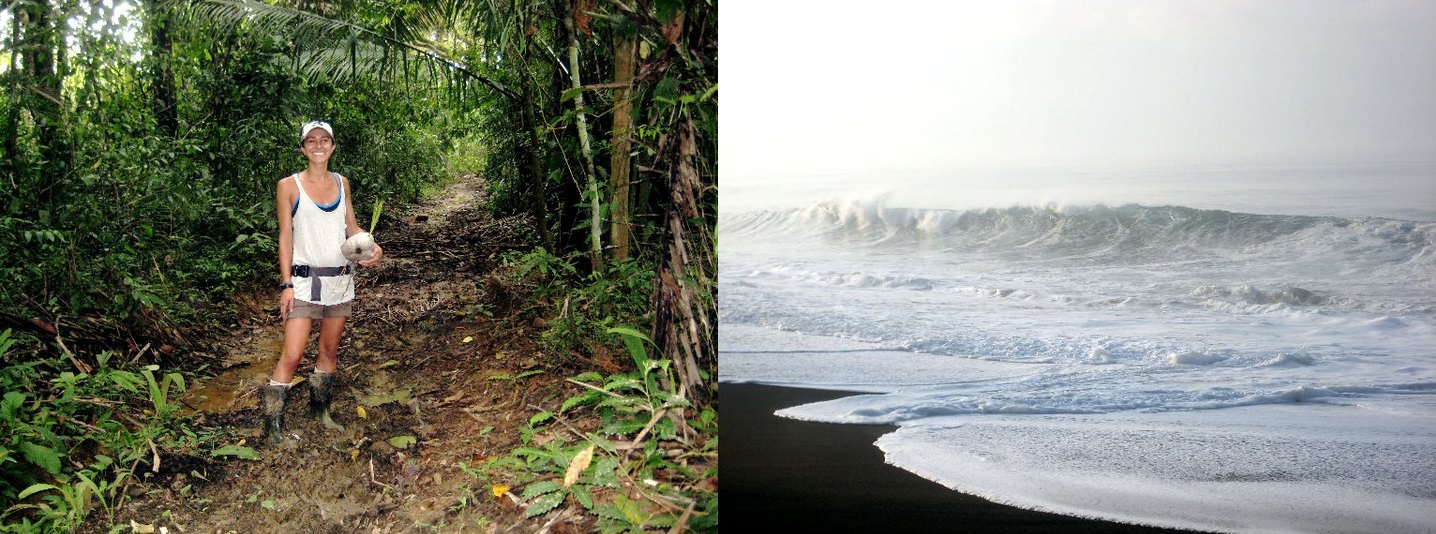A thunderstorm rolling over a remote Costa Rican beach unexpectedly produced an unforgettable night of turtle research.
Bernard DUPONT/Wikimedia Commons (CC BY-SA 2.0)
Field Trials is a regular column in which early-career researchers recount the unexpected highs and lows of collecting data.
In 2010, equipped with a multi-faceted science degree and a passion for new adventures, I accepted a field research assistant position in one of the most remote regions of Costa Rica, the Osa Peninsula. My mission was to observe and document the nesting behaviour of endangered sea turtles, to determine their response to encroaching development and habitat loss.
Upon arrival, I met my research scientists, and was offered crash courses in both sea turtle behaviour and field data collection. Neither could prepare me for the gruelling nature of the job. Soon enough, I could identify turtle species from track markings, and locate an already-buried nest based on broken twigs in the sand. Eventually, I came to understand how intimately these ancient creatures understood and relied upon the rhythmic cycles of nature.
Days quickly passed with turtle literature and data entries, and nights were filled with sea turtle sightings and poacher close encounters. I felt as though I had been living this way forever. One day, we received news that caused quite a commotion throughout the research station — the Chief Coordinators of the Ministry of Environment and Energy (MINAE) would be joining us on a night patrol! While Costa Rica is one of the few countries not to have an armed force, they employ MINAE to protect their most precious resource, the environment. When they arrived at our research station on the Osa, a thunderstorm of epic proportions was rolling in, and our excitement to head out into the field was palpable.
We embarked on our trek through the jungle to reach the unadulterated beaches that thousands of sea turtles know as "home", and the rain began to fall softly. By the time we reached the beach, we were all drenched. Certain nights yielded more turtle sightings than others — as we neared the end of the beach with not a single turtle sighting, our enthusiasm began to wane, and the storm continued to build.
During her stint on the Osa Pensinula, Costa Rica, Ashleigh Papp (left) patrolled pristine beaches in search of sea turtles. © Ashleigh Papp
Around midnight, the first turtle of the night emerged from the froth. We waited for 30 minutes, in the thrashing wind and pelting rain, as the olive ridley turtle oh-so-slowly ascended to the very top of the shoreline. Once she had found the perfect patch of sand, she began carving out a 'sand angel' shape. As we watched from afar, her swaying and sand flinging continued — her slow movements making no sense to us but meaning everything to her. Then, suddenly, her back flippers began to dig a long, cylindrical hole below the sandy surface. Poised above the new home of her offspring, the sea turtle slipped into a trance-like state and the eggs began to drop.
This is when our work began. We sprang into action, executing each task and explaining to our guest researchers simultaneously. We recorded physical measurements and nest dimensions, a process that, to avoid disrupting the turtle, can take anywhere from one to several hours. When we noticed another turtle crawling up the sand next to us, our group quickly divided in half and began the process all over again.
As the night progressed, we realised the turtles were more in tune with the moon cycle than we ever could have anticipated. During a new moon, hardly any natural light is shed onto the sandy beaches, meaning sea turtles can more safely build a nest and deposit their eggs. Thousands of years’ worth of evolutionary learning has taught these ancient creatures the benefits of seizing such an opportunity.
By the time the sliver of a moon retreated, we had observed and tagged over 25 turtles in a single night. We returned to the research station — exhausted, covered in mud, and already itchy from countless bug bites, but without a single complaint. Elated by it all, we stayed awake long enough to exchange our accounts of the night and watch the sunrise together. And the next month, when the moon began a new cycle and I headed into the jungle towards that same stretch of sand, I smiled and welcomed the adventure ahead.
Edited by Andrew Katsis































































